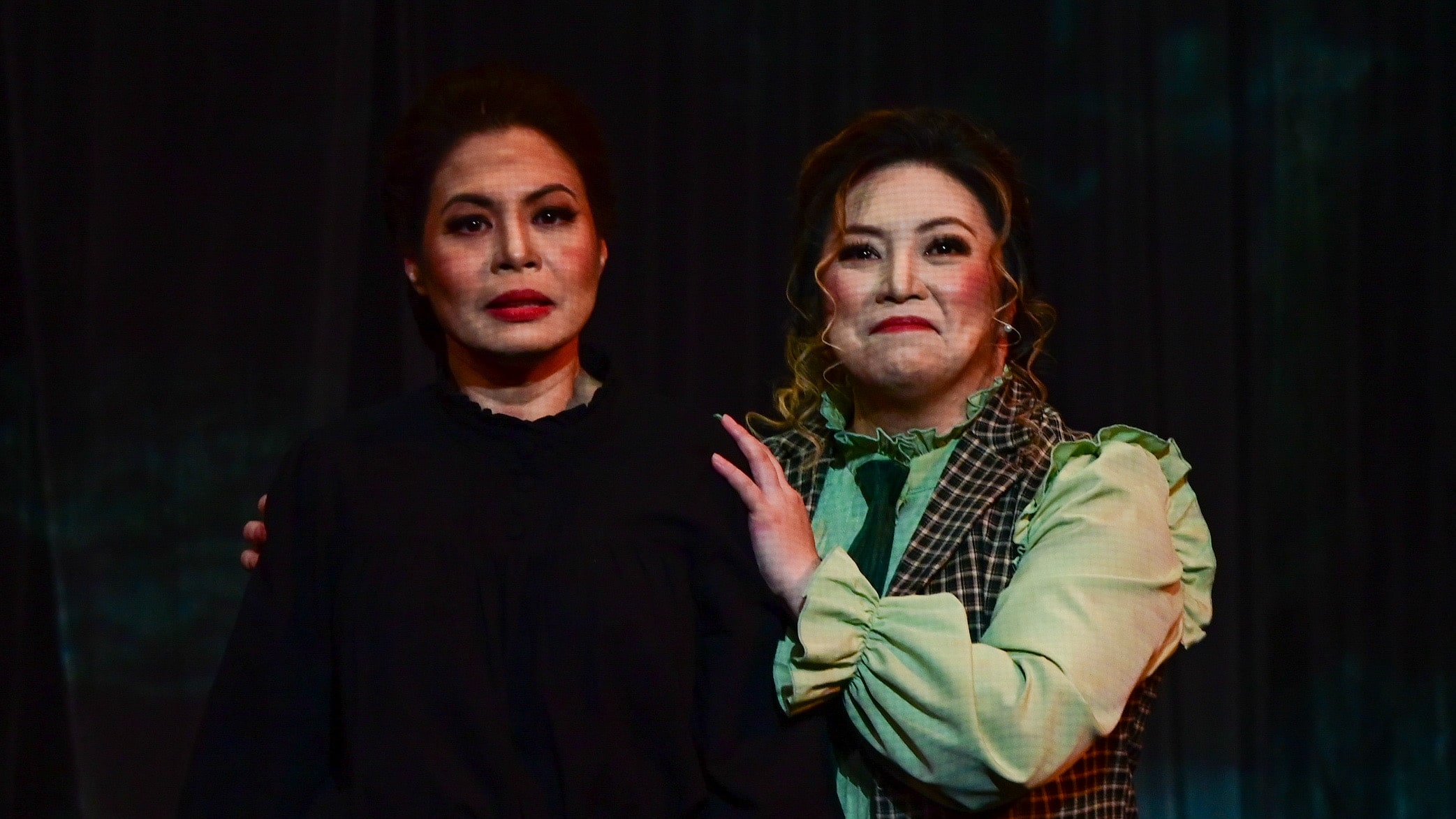
REVIEW: ‘The Half-Life of Marie Curie’ is a touching tale of female rage and friendship
“It’s an affair gentlemen, it’s not contagious” will always be a favorite line.
Even genius Nobel Prize winners get embroiled in scandal sometimes.
That’s how this show starts in the year 1912—with scientist Marie Curie (Missy Maramara) holed up in her home after her supposed affair with married Paul Langevin is revealed to the public. The French press, dying for a scoop, are literally waiting outside Marie’s door, so her friend Hertha Ayrton (Caisa Borromeo) convinces Marie to stay with her at her seaside home in England. There, they reminisce about their friendship, declare their love for science over drinks, and rail at unfair double standards.
Historical figures come to life
Most of us already know who Marie Curie is. She discovered radium and polonium and was the first woman to win a Nobel, after all. But thanks to Lauren Gunderson’s script and Kiara Pipino’s direction, audiences will have a new favorite woman in STEM in the form of electromechanical engineer and sufragette Hertha Ayrton. Don’t get fooled by the title—this two-hander is as much Hertha’s story as it is Marie’s.
Maramara’s reserved Marie and Borromeo’s loud, extrovert Hertha were a pleasing combination. Borromeo as Hertha was larger than life, a supportive “girl’s girl” who would do anything for her friend, while Maramara was equally convincing as a struggling, lost Marie. Both actresses were especially compelling during the show’s climax: a heated confrontation that starts when Hertha finds Marie’s green vial. The way they threw punches at each other with their words while expressing love, frustration, and despair all in one scene was admirable and made me want to see more.

Bottom to Top: Missy Maramara as Marie Curie and Caisa Borromeo as Hertha Ayrton; Photo Credit: Kyle Venturillo
Aside from the scandal, Marie was already sick because of radiation exposure. It was surreal watching historic figures come to life and humanized, with playful banter such as when they would talk about a certain Albert Einstein as an eccentric penpal rather than a larger-than-life figure.
The production’s minimal set design and toned-down colors fit the show’s historical drama-esque vibe, highlighting Marie’s precious green vial of radium that she would keep in her pocket or sometimes even wear around her neck. There was no need for elaborately detailed backgrounds or sets, as the audience only really needed to focus on Hertha and Marie.
The screen projections, however, were distracting at times. Right when one is fully immersed in a scene, soaking in the nineteen hundred-ness of it all—such as when Marie realized she was on her deathbed—the audience may find themselves jolted back to the present by digital projections that do not seem to belong there.
Asking the right questions
The Half-Life is set during a time when most women could not vote, where they had few legal rights, and where Marie almost did not win her first Nobel if her husband Pierre had not insisted on sharing the honor with her. There was something soothing about the way the characters were able to express their rage: at the world, at the unfair systems boxing them in, at…men. It was refreshing to see Marie and Hertha unabashedly let it out—even if it was just between them and the four walls of Hertha’s summer home.
The Philippine entertainment industry’s obsession with “kabit” or “mistress” soap operas has made this writer wary of stories involving cheating. But this show allayed those fears and asked the right questions, not just about adultery but also about different issues related to gender inequality.
For example, why was it that Marie took most of the blame for the affair, branded an adulteress and homewrecker? How come her accomplishments, her contributions to science, were suddenly overshadowed by the scandal while Paul got off scot-free? As Hertha says in the show, if it had happened to a male colleague, other scientists would be “taking him out for a drink”. As they question these double standards when it comes to affairs, Hertha and Marie proceed to take the audience on a tour of other pressing issues that women of their time are facing.
Girlhood core

L-R: Missy Maramara as Marie Curie and Caisa Borromeo as Hertha Ayrton; Photo Credit: Kyle Venturillo
The show highlights the strength and love between two female best friends, scientists, widows, and mothers. This writer loves how Marie and Hertha’s friendship mirrors today’s concept of “girlhood” with Gunderson’s witty and modern dialogue. Just like us, Marie and Hertha were squabbling and making up, spilling the tea while analyzing every little detail, and proving that sometimes you just need your best friend to heal a heart she didn’t break.
The Half-Life of Marie Curie is a testament to how, during one’s darkest days, it’s not the fleeting romances that will save you but the unbreakable friendships you’ve built. It’s for the period drama romantics, the history buffs, and honestly anyone who’s ever had a best friend.
Tickets: Php 560 – Php 700
Show Dates: August 23 -25 and August 27-31, 2024
Venue: Doreen Black Box, Areté Ateneo
Running Time: approximately 90 minutes
Credits: Lauren Gunderson (Playwright), Kiara Pipino (Director, Production Designer), Jessy Gardner (Sound Designer), Bethany Marx (Costume Designer), GA Fallarme (Production Designer), Jethro Nibaten (Lighting Designer), Julia Macuja (Assistant Set Designer), Adriane Ungriano (Technical Director), Zoe De Ocampo (Graphic Designer), Jopie Sanchez (Makeup Artist), Dimple Gallada (Hairstylist), Rheizter Yves Gallada (Assistant Hairstylist), Paul Atienza (Costumes and Makeup Head), Aldrie Valmonte (Lights Boardsman), Aliyah Dy (Sound Engineer), Louisa Tagulinao (Production Manager), Jenel Dela Torre (Stage Manager), Jam Binay (Marketing Head), and Frankie Ramos (House and Sales Head)
Cast: Missy Maramara (Marie Curie) and Caisa Borromeo (Hertha Ayrton)
Company: MusicArtes, Inc.


Comments